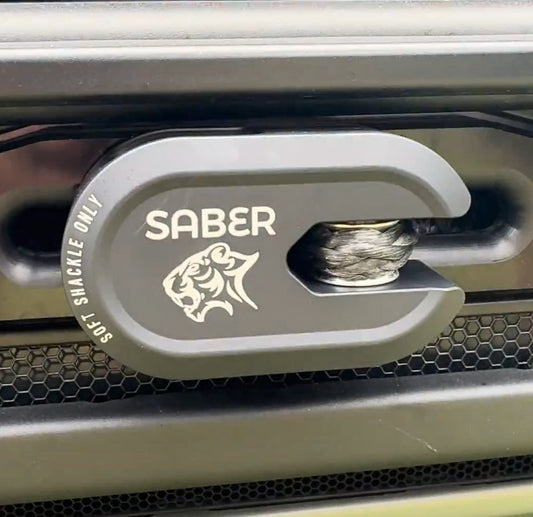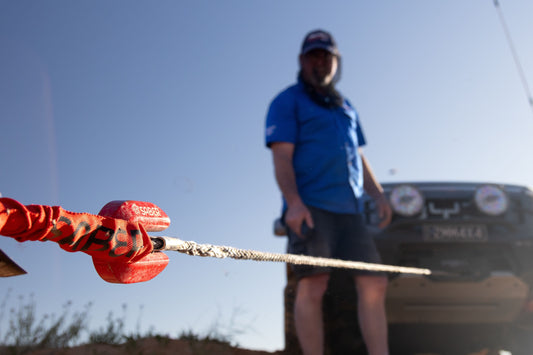Why a Bridle is Essential for Safe Off-Road Recoveries

When you’re deep off-road and stuck in mud, sand, or snow, recovery gear is the difference between adventure and disaster. Most 4WDers think about recovery ropes, winches, or shackles first — but one of the most important, and often overlooked, tools is the bridle.
A bridle doesn’t just make recoveries smoother. It makes them safer. And choosing the right one could save you from costly vehicle damage or worse. Here’s what every off-roader needs to know about bridles — and why Saber Offroad’s independently batch tested, Australian-designed gear is trusted by serious 4WDers.
What is a Bridle and Why Do You Need One?
A bridle, sometimes called an equaliser strap or V-bridle, connects two recovery points on your vehicle and attaches to your recovery rope or winch line. By spreading the load across both points, it protects your vehicle and improves the safety of every recovery.
Key benefits of using a bridle:
-
Even load distribution – Prevents overstressing a single recovery point.
-
Centred pull – Keeps recovery forces straight, avoiding chassis twist.
-
Increased safety – Reduces the risk of catastrophic point or gear failure.
-
Lower side-loading – When set up correctly, it reduces damaging sideways stress.
In short: if you value your vehicle and your safety, a bridle should be in every recovery kit.
The Science Behind Bridles: Vector Forces at Work
Recovery isn’t just brute force — it’s about physics. As RopeBook explains in its guide to vector forces, the angle of your bridle’s legs has a huge impact on how much load each recovery point carries.
-
Short legs/steep angles increase side loading, putting more force on each recovery point.
-
Longer legs/wider angles distribute force more evenly and reduce risk.
-
Uneven lengths can overload one side, even if you think the load is shared.
L2SFBC’s analysis of load distribution in twin recovery points reinforces this: you don’t always get a perfect 50/50 split. Geometry matters. A poorly chosen or poorly set up bridle can make things worse, not better.
Why Choosing the Right Bridle Matters
Not all bridles are created equal. Picking the wrong one can lead to hidden dangers. Here are the key factors to consider:
-
Strength Rating
Your bridle must exceed the loads you expect to encounter. Don’t assume your rope’s rating covers the whole system — angles, shock loading, and dirt contamination can multiply the stresses involved. -
Length & Angle
A bridle that’s too short increases dangerous side-loading. Longer legs are safer and distribute force more evenly. -
Material & Durability
A bridle needs to resist abrasion, UV damage, water, and dirt. Substandard materials degrade quickly and can lead to failure without warning. -
Testing & Transparency
Ratings without testing are just numbers. Look for gear that’s been independently lab tested and under real-world conditions, not just in theory.
Why Saber Offroad Bridles Are Different
At Saber Offroad, we don’t cut corners — because when you’re 200km from the nearest town, failure isn’t an option. Here’s why our bridles stand out:
-
SaberPro® Fibre – Our proprietary fibre offers exceptional strength, abrasion resistance, and durability.
-
Independent Testing – We test in Australia’s toughest labs, including NATA-accredited facilities, and push gear past its limits.
-
Multiple Strength Options – From 9,000kg to 16,000kg bridles, so you can match the gear to your vehicle and recovery rope.
-
Built-in Abrasion Protection – Protective sheathing where it matters most.
-
Designed for Australia – Engineered for the harshest off-road conditions: sand, heat, mud, and rock.
Cheaper bridles might look similar, but they often use inferior fibres, coating, skip abrasion protection, or inflate ratings without testing. That might save a few dollars now — but when your vehicle’s stuck to the axles in mud, you’ll wish you had Saber.
Best Practices for Using a Bridle
To get the most from your bridle, follow these guidelines:
-
Inspect your gear before every recovery for signs of wear.
-
Aim for a wider V-shape — avoid steep, short angles.
-
Match the bridle’s rating to your rope and vehicle size.
-
Use protective sleeves if running across rough or sharp surfaces.
-
Keep bystanders clear of potential recoil zones.
Used correctly, a bridle makes your recovery system stronger, safer, and more reliable.
FAQs About Bridles in 4WD Recoveries
Q: Do I really need a bridle if I already have a rated recovery point?
A: Yes. A single point takes the entire load, which risks point failure and chassis damage. A bridle shares the load and creates a safer, more stable recovery.
Q: What size bridle do I need?
A: Match the bridle to your recovery rope and vehicle weight. For most 4WDs, Saber offers options from 9,000kg to 16,000kg — ensuring there’s a bridle to suit your setup.
Q: How long should my bridle be?
A: Longer is generally safer, as it reduces side-loading. Saber’s bridles are designed to strike the right balance between safety and practicality.
The Bottom Line: Choose Safety, Choose Saber
A bridle isn’t just another piece of recovery gear — it’s a vital safety tool. The right bridle distributes force, protects your vehicle, and makes every recovery safer. The wrong one risks equipment failure, vehicle damage, or injury.
Saber Offroad bridles combine advanced materials, real-world testing, and smart design to give you confidence in every recovery. When the track disappears and your vehicle’s buried, don’t trust “good enough.” Trust gear that’s been engineered and tested to perform when it matters most.
Saber its the Gear To Get You HOME!
To find a Saber stockist near you click here.
To find the Saber Bridle range online click here.






